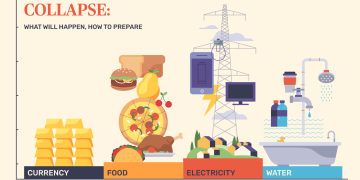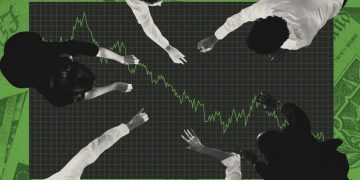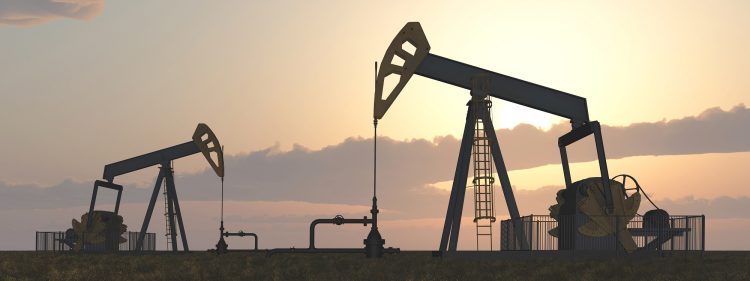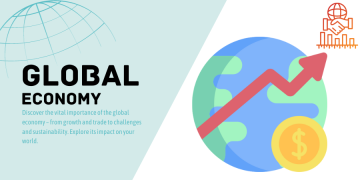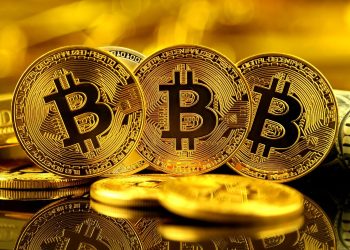In recent months, the price of oil has seen a sharp rise, triggering alarm bells around the world. This price surge, which has affected both crude oil and refined products such as gasoline and diesel, has sparked debates over the underlying causes and what it means for the global economy. While factors such as supply-demand imbalances and market speculation have always played roles in shaping oil prices, the current spike is deeply intertwined with shifting global geopolitics.
The dynamics of international relations, the interplay of political decisions, and evolving tensions across the globe have all contributed to this dramatic rise in oil prices. In this article, we will explore the factors driving oil price increases, analyze how international geopolitical developments influence global oil markets, and predict the potential consequences for businesses, consumers, and governments.
1. Understanding the Factors Driving the Surge in Oil Prices
Before delving into the geopolitical context, it’s important to understand the fundamental drivers behind the surge in oil prices. These factors are not just isolated to a single region, but rather have global ramifications that are deeply intertwined with political and economic developments around the world.
Supply Chain Disruptions
In recent years, the global oil supply chain has faced a variety of disruptions. The COVID-19 pandemic initially led to a dramatic reduction in demand for oil as travel and industrial activity plummeted. This caused oil producers to scale back production. As economies gradually reopened, the demand for oil quickly rebounded, but supply has struggled to catch up.
This imbalance between supply and demand has led to higher prices. Additionally, major oil-producing countries, including members of the Organization of the Petroleum Exporting Countries (OPEC), have been slow to increase production due to a mix of cautious planning, political considerations, and the desire to maintain price stability. This scarcity of supply has made oil markets more sensitive to any external disruptions, further driving up prices.
Energy Transition and Investment Cuts
In the past decade, the global energy landscape has been shifting. Many countries are prioritizing investments in renewable energy sources, such as wind, solar, and electric vehicles, to combat climate change. While this shift is necessary, it has had a side effect on traditional oil investments.
Oil companies have been under growing pressure to reduce their carbon footprints and allocate more resources toward clean energy. This has resulted in reduced investments in new oil exploration and development. With fewer new projects coming online, there is less new supply entering the market to meet rising demand, further contributing to the price hike.
Inflationary Pressures
Rising inflation has also played a significant role in pushing oil prices higher. With inflation running high in major economies like the U.S. and the European Union, the cost of producing and transporting oil has risen. This has been compounded by higher labor costs, supply chain inefficiencies, and the increase in commodity prices in general, all of which have made oil more expensive.
Additionally, central banks’ monetary tightening policies, aimed at curbing inflation, have had the side effect of pushing up the cost of borrowing, making energy more expensive as companies pass on higher operating costs to consumers.
2. Geopolitical Tensions and Their Impact on Global Oil Prices
The surge in oil prices is also closely tied to a range of geopolitical events and power dynamics that have heightened uncertainty and instability in oil-producing regions. These factors not only affect oil production but also influence market sentiment, which in turn drives prices.
The Russia-Ukraine War: A Game-Changer
One of the most significant geopolitical factors contributing to the recent surge in oil prices is the ongoing conflict between Russia and Ukraine. Russia is one of the world’s largest oil and gas exporters, and the war has caused massive disruptions in the global energy markets. Sanctions imposed by Western countries, including the U.S. and the EU, on Russia’s oil and gas exports have limited the supply of oil to global markets, while simultaneously driving up global energy prices.
In addition, the war has had a direct impact on energy flows across Europe. As Russia has been forced to reduce its oil exports to Europe, countries have scrambled to secure alternative supplies from other oil-producing nations. This supply crunch has intensified competition for available crude, further pushing prices upward.
The war also highlights the vulnerability of energy markets to political instability in key oil-producing regions. Any conflict involving major oil producers can have far-reaching consequences for global energy prices, especially in a time when the world is still heavily dependent on fossil fuels.
Middle East Instability and Production Cuts
The Middle East, home to some of the world’s largest oil reserves, has long been a focal point for geopolitical tensions. Events such as the ongoing instability in Iran, the conflict in Yemen, and tensions between Saudi Arabia and Iran continue to create a volatile atmosphere for oil production in the region.
While OPEC has played a role in managing oil supply and prices, the group’s decisions are often influenced by political dynamics. For instance, Saudi Arabia, the largest oil producer in the Middle East, has at times been at odds with other members of OPEC over the level of production cuts or increases, often in an effort to protect its own market share or stabilize prices. These production cuts by OPEC and other key producers are often made with geopolitical motivations in mind, further complicating the situation.
U.S. Energy Policies and Global Influence
The U.S. is another major player in the global oil market, not just as a consumer, but also as a producer. In recent years, the U.S. has become one of the world’s largest producers of oil, primarily due to the boom in shale oil production. However, the country’s energy policies also have a significant impact on global oil prices.
For example, the decision by the Biden administration to restrict the issuance of new drilling permits on federal lands has had an impact on U.S. domestic production, causing some concerns about future supply. Additionally, any U.S. sanctions or trade policies aimed at restricting oil imports or exports can send ripples throughout global markets, as seen with the restrictions on Iranian and Venezuelan oil exports.
The U.S. also plays a pivotal role in shaping global energy diplomacy, particularly in the context of energy security and price stability. Any shifts in U.S. foreign policy, particularly with respect to oil-producing countries, can have far-reaching consequences for global oil markets.

3. Global Oil Market Reactions: What This Means for Consumers and Businesses
The soaring oil prices have had wide-ranging effects on both consumers and businesses across the globe.
Higher Energy Costs and Inflation
For consumers, higher oil prices mean rising costs at the pump and an increase in heating and transportation costs. This has been particularly challenging for households already grappling with inflation in food and other essential goods.
The ripple effect of high oil prices extends far beyond energy bills. As transportation and production costs rise, the cost of goods and services also climbs, contributing to higher inflation levels globally. For many economies, this creates a damaging cycle where higher oil prices lead to increased costs of living, which in turn dampens consumer confidence and spending.
Impact on Global Supply Chains
The transportation sector is one of the most heavily impacted by rising oil prices. Companies involved in shipping, logistics, and air freight face higher operating costs as fuel prices climb. This translates to higher costs for businesses, which are often passed on to consumers in the form of higher prices for goods and services.
In addition, industries dependent on oil as a raw material—such as petrochemicals, plastics, and fertilizers—also face increased production costs. These rising costs can affect industries worldwide, potentially leading to slower economic growth or even recession in some regions.
Potential for Energy Transition Acceleration
On a more positive note, the soaring cost of oil may hasten the transition toward renewable energy sources. As oil prices rise, there is increased incentive for governments, businesses, and consumers to invest in alternatives such as electric vehicles (EVs), wind and solar energy, and energy-efficient technologies.
Higher oil prices could make these alternatives more financially attractive, driving demand for clean energy solutions and potentially accelerating the global shift toward a more sustainable energy future.
4. Conclusion: The Future of Oil Prices and Global Markets
The surge in oil prices has highlighted the complex and interconnected nature of global geopolitics and the energy market. While the price increase is driven by a combination of supply and demand dynamics, the impact of geopolitical instability cannot be understated. The ongoing Russia-Ukraine conflict, Middle East tensions, and U.S. energy policies all contribute to the volatility of the oil market.
As oil prices continue to rise, the global economy faces both challenges and opportunities. While higher oil prices contribute to inflationary pressures and increase costs for businesses and consumers, they also accelerate the transition toward renewable energy, potentially reshaping global energy markets for the long term.
For governments, businesses, and consumers, adapting to these new realities will require a careful balancing act. Whether the current oil price surge is a temporary spike or the beginning of a longer-term trend remains to be seen, but the geopolitical context surrounding oil prices will undoubtedly continue to play a significant role in shaping the global economic landscape.




